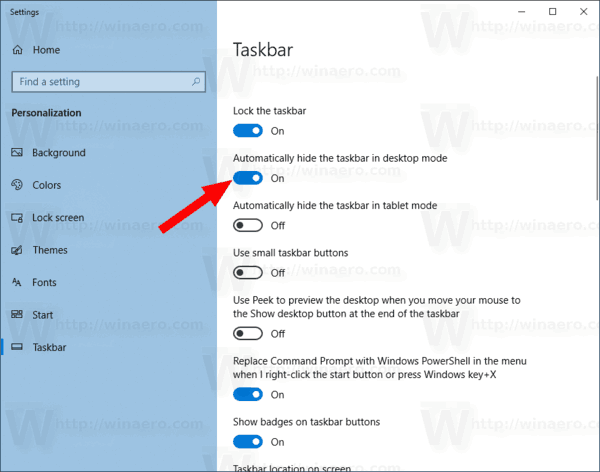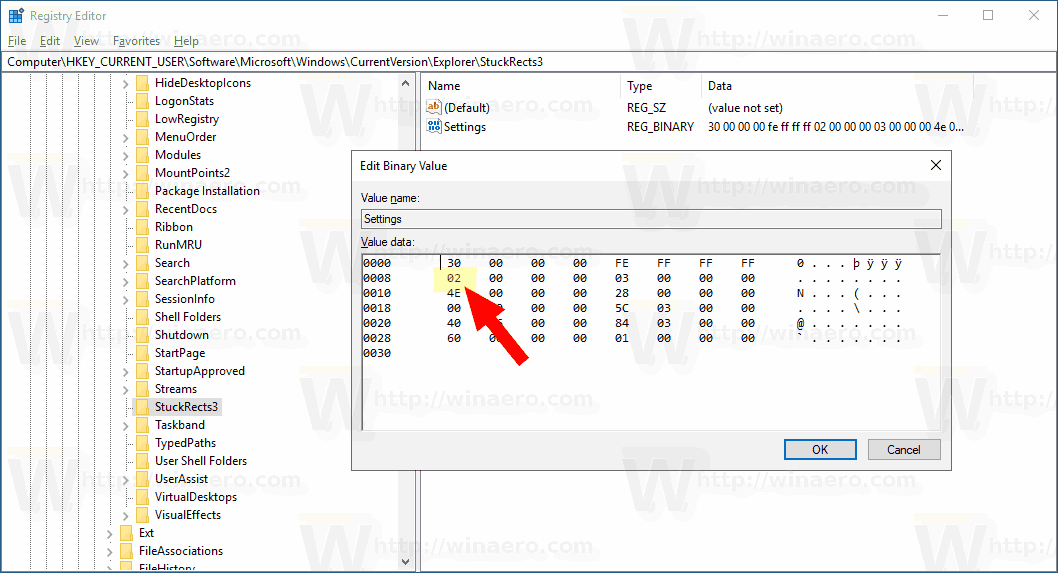The taskbar is the classic user interface element in Windows. First introduced in Windows 95, it exists in all Windows versions released after it. The main idea behind the taskbar is to provide a useful tool to show all running apps and open windows as tasks and switch quickly between them. In this article, we will see how to make the taskbar auto-hide in Windows 10 in order to leave more room for open windows and hide your tasks from other people watching your screen.
Advertisеment
In Windows 10, the taskbar may contain the Start menu button, the search box or Cortana, the task view button, the system tray and various toolbars created by the user or third-party apps. For example, you can add the good old Quick Launch toolbar to your taskbar.
Windows 10 allows hiding the taskbar automatically unless it is required. When it is auto-hidden, maximized windows can occupy the place which was dedicated to the taskbar, so vertically, maximum screen estate is available. This can be useful when you are working with large documents, or high resolution photos. Also, when the taskbar is hidden, onlookers cannot see which apps you have currently open.
This is the default taskbar in Windows 10.

The next image demonstrates the hidden taskbar.

To make the hidden taskbar re-appear on the screen, you can either move your mouse pointer to the edge of the screen where the taskbar is, or press the Win + T keys, or swipe inwards from the screen edge on a touch screen device.
To auto-hide the taskbar in Windows 10, do the following.
- Open Settings.
- Go to Personalization - Taskbar.
- On the right, turn on the option Automatically hide the taskbar in desktop mode. Enable it to activate taskbar auto hiding.

- The changes will take effect instantly.
You are done.
Tip: Starting in Windows Build 14328, it is possible to automatically hide the taskbar in Tablet mode. See the article Make taskbar auto hide in Tablet Mode of Windows 10.
Alternatively, you can apply a Registry tweak to make the taskbar auto-hide in Desktop mode.
Here is how it can be done.
Make the taskbar auto-hide with a Registry tweak
- Open the Registry Editor app.
- Go to the following Registry key.
HKEY_CURRENT_USER\SOFTWARE\Microsoft\Windows\CurrentVersion\Explorer\StuckRects3
See how to go to a Registry key with one click.
- On the right, modify the binary (REG_BINARY) value Settings. Set the first pair of digits in the second row to 03 to make the taskbar auto-hide. Change this value to 02 to disable it.

- To make the changes done by the Registry tweak take effect, restart the Explorer shell.
That's it.
Support us
Winaero greatly relies on your support. You can help the site keep bringing you interesting and useful content and software by using these options:

Thank you so much for sharing this, I was struggling for 1 hour to solve this problem.
Really helpful post,was struggeling alot with this.
Great post! Your insights are spot on and the way you presented the information was both engaging and informative. I learned so much from reading this. Thank you for sharing your knowledge and taking the time to put this together. Keep up the fantastic work!
Thanks for sharing, it worked for me really appreciate .
You have such a talent for breaking down complicated ideas into simple steps. I really appreciate your clarity and effort.
Absolutely loved this post! Your insight really opened my eyes to a new perspective. Thank you for sharing!